It probably sounds ridiculous to those of you swaddled in snow in other parts of the country right now, to know that also right now, my most prolific harvest from the garden are these darling chile peppers called Filius Blue.
It’s February, Punxsutawney Phil is telling us six more weeks of winter, but apparently California missed the memo. (Not that Phil’s ever been right, anyway; according to NPR, the poor fella’s only had 39 percent accuracy since he started his forecasting career in 1887.)
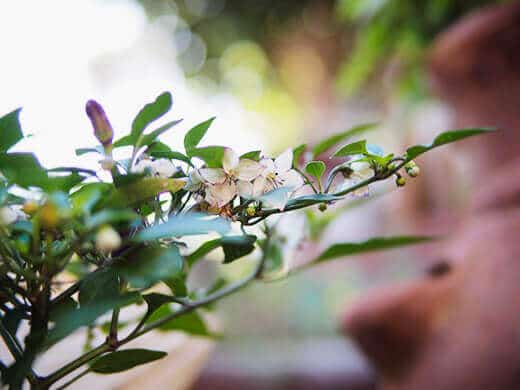
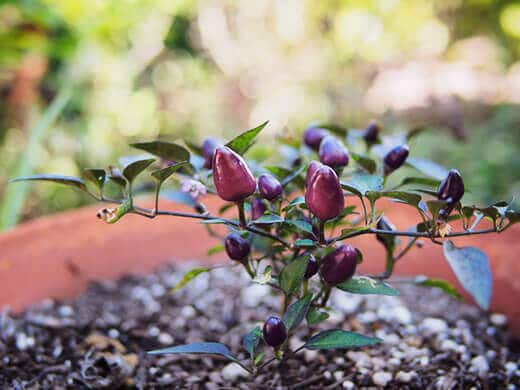
With our own weather lingering in the 70s and 80s all winter, these little peppers have been flowering and fruiting like gangbusters. Every other week I bring in another handful of deceptively tiny peppers that are so potent, a little goes a long way. That means I’ve been inundated with peppers all season long and keeping a bowl in the kitchen where I dump them all, ready for drying.
Filius Blue is an heirloom chile originating from Mexico. It’s a compact plant, growing no more than 2 feet tall with blue-tinged foliage and delicate white flowers, and because of that it makes a beautiful container plant.
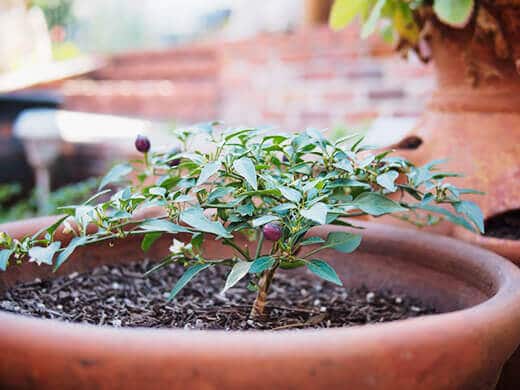
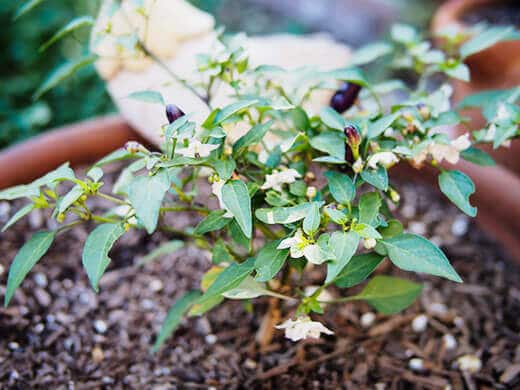
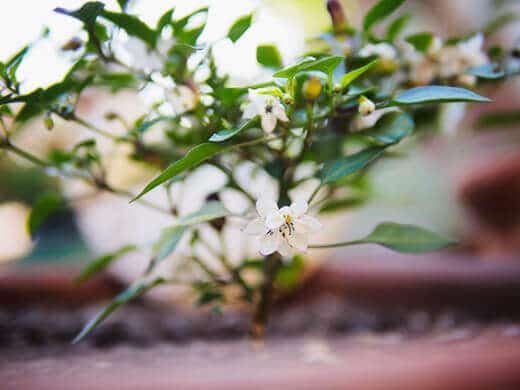
The peppers are very ornamental, starting out as a deep bluish-purple and maturing into an orangey-red. When young, the peppers have a lot of heat, measuring 40,000 to 58,000 units on the Scoville scale. (In comparison, a serrano pepper measures 10,000 to 23,000 Scoville units.) But as they ripen into flame red fruit, they become surprisingly milder in flavor (though they still have quite a kick).

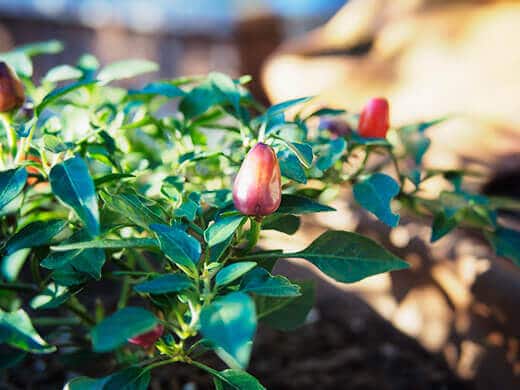
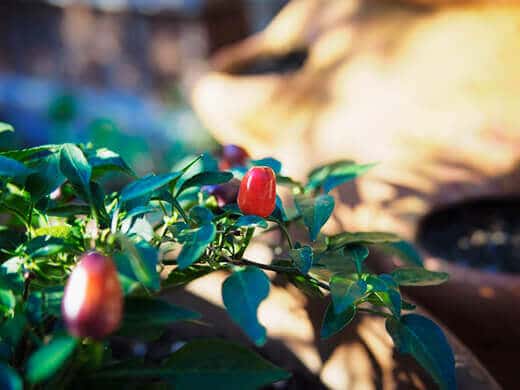
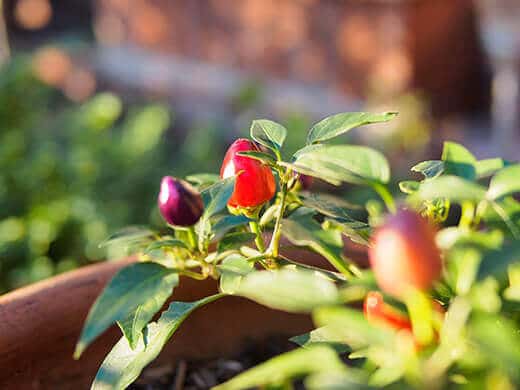
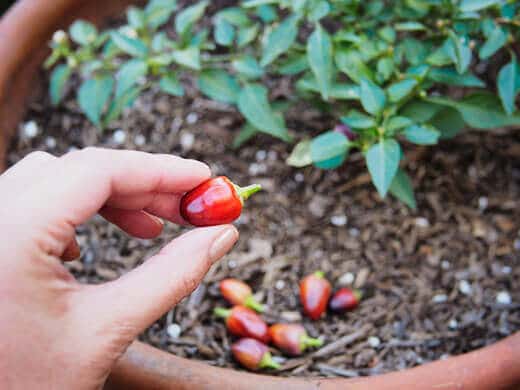
My plants are entering their second year and doing well, even adapting to this weird weather when I thought I’d for sure lose them during an early December cold spell. I keep them right outside my kitchen door in 10- and 12-inch pots, and they haven’t grown more than a foot tall. But they produce more peppers than I’ll ever need and seem to tolerate our occasional coastal fog and nighttime lows in the 50s. I’m a little afraid of what these plants will look like once we start getting more sun in the summer!
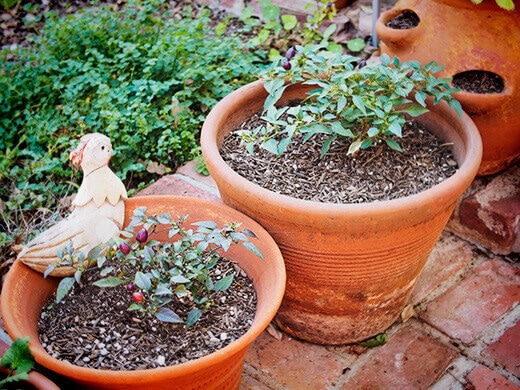


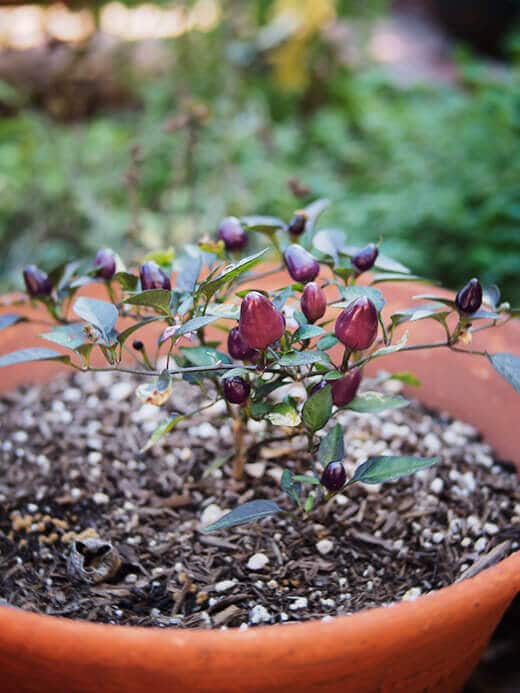













I have been using dilute urine (10 parts water to 1 part urine) in my potted pepper plants every second watering, and alternate with plain water. I use no other fertilizer. This tactic encouraged four, 1 year old, plants with tiny, starved and shriveled leaves, into producing lush foliage, new stems and flower buds. One other 3 year old pepper plant, which had been forgotten in a corner, was nearly dead with thin, spotted, dry and drooping leaves. The urine treatment brought it back to life with lush new leaves, branches and flowers. It looks like a happy youngster now. The best thing is, this fertilizer is free. 🙂
A single pee in a gallon jug, topped off with water produces the correct ratio, (or approximate enough) gave all five plants exactly the nutrients they needed. I use an old laundry soap jug, and pee (carefully) in the opening, though I suppose one could use a plastic funnel if necessary.
I heard about this, and decided to try it. I have been amazed at the results. Peppers seem need a lot of nitrogen. Urine supplies that and apparently enough phosphor, since there was early flowering. This rejuvenation took place during the winter when the plants are brought indoors, and was successful in spite of the lack of bright sunlight. I recognize this may seem weird to anyone but a farmer.
I’ve long known about this but haven’t tried it yet. My husband used to joke that he could fertilize our entire yard by using it as his bathroom, and I would not be surprised if he’s peed around our fruit trees at some point. 🙂 Compared to all the other forms of animal waste we spread around our gardens, human pee seems hardly out of the ordinary!
Can I ask how long yours took to sprout up? I started some seeds 2 weeks ago and nothing seems to be happening. I’ve never done peppers before so I’m not sure if this is normal…
Peppers can take a long time to germinate if you don’t have a heating mat. Mine sometimes take 3-4 weeks if I just leave them out at room temp, and 2 weeks if I place them near a heater. I have the best luck using the baggie method for sprouting pepper seeds: http://gardenbetty.com/2013/02/starting-seeds-in-coffee-filters-or-paper-towels/
What do they taste like when young as compared to later when fully matured?
They’re a little hotter when young (purple).
I will be planting these for the first time this year. I didn’t know they got milder as they mature!
These prolific plants will give you more peppers than you’ll ever need. A Wee Little Pepper Called Filius Blue http://t.co/bDCb1hREFP
RT @theGardenBetty: Deceptively tiny peppers that pack a lot of heat. A Wee Little Pepper Called Filius Blue http://t.co/kDNksl9nsB #garden…
RT @theGardenBetty: Deceptively tiny peppers that pack a lot of heat. A Wee Little Pepper Called Filius Blue http://t.co/kDNksl9nsB #garden…
Deceptively tiny peppers that pack a lot of heat. A Wee Little Pepper Called Filius Blue http://t.co/kDNksl9nsB #gardenchat #gardening
RT @theGardenBetty: What I’m growing: this heirloom pepper from @rareseeds. A Wee Little Pepper Called Filius Blue http://t.co/TA04GHLMNt #…
What I’m growing: this heirloom pepper from @rareseeds. A Wee Little Pepper Called Filius Blue http://t.co/TA04GHLMNt #gardenchat
Erin Marriott liked this on Facebook.
Georgette Howington liked this on Facebook.
An abundance of chile peppers in the middle of winter. A Wee Little Pepper Called Filius Blue http://t.co/S8bzQTj8yj #gardenchat
Write Soon liked this on Facebook.
Marjorie Pitts liked this on Facebook.
Please tell us how you like to use the dried chiles!!
Typically I rehydrate them to use in sauces and salsas, but dried I use them to infuse oils or grind into pepper flakes.
RT @theGardenBetty: A beautiful heirloom pepper to grow this season: A Wee Little Pepper Called Filius Blue http://t.co/cBlaOE8m5q #gardenc…
A beautiful heirloom pepper to grow this season: A Wee Little Pepper Called Filius Blue http://t.co/cBlaOE8m5q #gardenchat #gardening
What a GORGEOUS colour!! wow!! This has brightened up my day and given me garden fever. It’s -15C/5F here today!
Hang in there, spring is coming!
Thanks for sharing, I never saw these before 🙂
Jenn Daniel liked this on Facebook.
Matti Salomaki liked this on Facebook.
Liz Jones liked this on Facebook.
I love these little peppers! So hot and such a pretty plant!
Kelly Dugan Guerin liked this on Facebook.
Charlie Bourgeois liked this on Facebook.
Amber Snow liked this on Facebook.
Lydia Ann liked this on Facebook.
RT @BG_garden: A Wee Little Pepper Called Filius Blue:
It probably sounds ridiculous to those of you swaddled in snow in oth… http://t.c…
A Wee Little Pepper Called Filius Blue:
It probably sounds ridiculous to those of you swaddled in snow in oth… http://t.co/1A0qsQyQ2z
Blogged on Garden Betty: A Wee Little Pepper Called Filius Blue http://t.co/eeIPIwtcoF